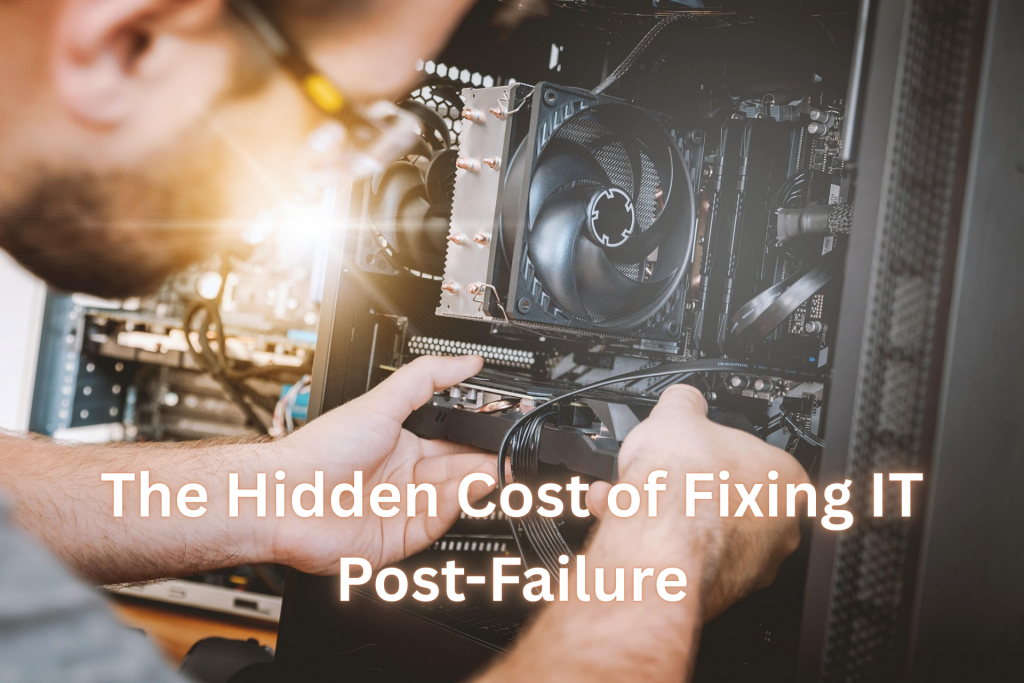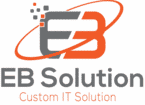The Hidden Cost of Fixing IT Post-Failure
IT issues are more damaging than your budget can endure. Some businesses hold off on getting IT help until issues disrupt operations. Although break-fix appears cheaper at first glance, it usually becomes more expensive in the long run. Cost-sensitive decision-makers must also know the actual cost of reactive IT support. As such, let us look closer at the difference between break-fix vs managed IT support.

Break-fix vs managed IT support The Hidden Cost of Fixing IT Post-Failure
Break-Fix IT: What It Really Means
The break-fix model for IT is easy. This is when there is a crash on a server or when the system goes down and you would call an emergency IT support technician to have it fixed and running. This opens you up to larger and unpredictable IT costs. Not only would you know how complex the issue is, which will determine the technician’s fee, you would also be surprised at the cost of possible hardware or software needed to get everything back up. However, because this is on a “by need” basis, there is no preventive care or ongoing service expenses associated with it. Although this might be nice on the surface since you only pay when you need help, this can also be disadvantageous for emerging companies.
Why This Model Hurts SMBs
Small and medium enterprises depend on technology in their day-to-day operations. Therefore, any system outages hurt sales, damage customer confidence, and reduce employee efficiency. As such, the break-fix model is a risky strategy.
Inconsistent Billing
The break-fix model has unpredictable IT costs. One month you spend nothing, the next you face thousands in emergency IT support.
Delayed Fixes
Moreover, without a formal support agreement, your issue may not receive urgent attention from technicians. In the same vein, the hardware or software needed to fix the issues may not be readily available. Hence, the need to order and ship them immediately at premium cost. This translates to several hours or even days of downtime. Therefore, leading to loss of revenue, disappointed customers, and damaged reputation while still paying the same expenses on top of the expenditure needed to get the system working again.
Total Cost of a Reactive Approach
The true expenses of the break-fix model extend to more than the technician’s bill for professional service. Most companies fail to recognize that loss of productivity, lost sales, damage to reputation and customer trust are bigger issues that result from this reactive approach. More importantly, without regular maintenance, the same problems appear again. When summed up, reactive IT ends up costing businesses more than what they would be paying under a managed IT support plan.
Predictable Pricing with Managed IT
Managed IT support, on the other hand, reverses the situation. Rather than spending money fixing a failure, you invest in prevention and system maintenance through IT cost planning. Here at EB Solution, one of the leading Canadian MSPs, we are focused on providing proactive monitoring and support on a flat monthly fee.
Subscription Models
Managed IT is like a subscription. You pay to have 24/7 monitoring, maintenance, and you are guaranteed response times.
SLAs
Having a provider of managed IT support like EB Solution, you are also bound into a Service Level Agreement (SLA). This means you know the service you are getting for a fixed amount. This predictable pricing model helps with IT cost planning and reduces financial stress.
ROI Case Study: Break-Fix vs Managed IT Support
Consider two similar businesses. One relies on break-fix, and the other collaborates with an MSP. Business A, who relies on the break-fix model, spends $0 on IT in January. However, in February, a breakdown of one server costs 10,000 dollars in emergency repairs and lost deals. On the other hand, Business B, who is paying $3,000 per month for their MSP finds and resolves problems before outages take place. Cost in two months: 6000 dollars, no time lost. This also means that since the system is well-maintained, it can have longer performance time thereby maximizing ROI. The managed approach is obviously cost-effective in the long run without compromising the operations.
Common Traps Business Owners Fall Into
Many owners of SMB hold wrong beliefs about the idea of undergoing a process replacement of processes and changing over to managed IT. One of these includes thinking that the break-fix model is more cost-effective due to a lack of monthly charges but totally dismissing the higher unpredictable IT costs from it. The threat of downtime is also another issue that most business owners and managers fail to identify, which leads to tremendous losses. Lastly, some SMB owners believe that MSPs are only for big firms when in fact having a proactive IT helps expand the businesses over time. These traps, in mindset, may involve increased expenses and preventable crises.
Tips to Transition to a Managed Provider
Switching is not as hard as it seems to many people. To start, you must know your current IT expenses, such as the loss of time. Having this data, you can check out MSP plans and see which offers the best coverage under the SLA. Additionally, you should also do a background check on your MSP. Ensure that the provider has proven experience and results in your field. Lastly, start with a blended strategy that combines select managed services and pay-as-you-go support options. In the same vein, professionals like EB Solution who custom make their plan to the specific needs and challenges of the individual business are the best option to maximize their services.
Long-Term Business Continuity Benefits
Proactive IT support involves more than repairing computers. It is all about protecting your entire business. Benefits include better security through ongoing monitoring helps detect potential risks before they escalate. Additionally, there is also increased production as a result of fewer disruptions. In line with this, employees can focus better on their work instead of worrying about connectivity or application issues. Lastly, with the forward thinking of technology requirements by managed IT services providers, your company is prepared for strategic growth. These advantages boost ROI and strengthen overall competitiveness.
Summary: Proactive Beats Reactive Every Time
Relying on reactive IT might appear budget-friendly, but it usually ends up being pricier. The break-fix model brings unpredictable expenses and frequent disruptions. Managed IT offers predictable pricing, proactive maintenance, and long-term savings. In Ontario, and other Canadian provinces and cities, working with an expert MSP like EB Solution allows for mitigating the risk and enhancing business continuity. Having proactive IT is not an expense, it is a form of investment in the future of the company.
